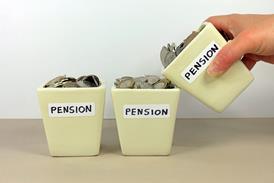Transfers from defined benefit to defined contribution schemes are increasingly common because DC allows members to access savings and low gilt yields have put a high capital value on DB pensions – both factors that can work in members’ favour.
Action points
-
Review your transfer basis to check it is fair
-
Quote transfer values to retiring members
-
Ask the employer to consider uplifts
Pensioners do not tend to spend in the same way throughout retirement, which can span two or three decades and sometimes longer.
The Office for National Statistics’ ‘Living Costs and Food Survey’ shows the changing spending pattern for pensioners: in 2010, the average expenditure for over 75s was £173 per week, while 65-74-year-olds spent around £35 more.
For households headed by someone over 75, about two-fifths of total expenditure went on essentials such as food, non-alcoholic drinks, energy bills, housing and council tax, compared with around a third for households in the 65-74 age range.
Part of this decrease in expenditure reflects a lower income for older pensioners, but ill health and lack of mobility also have an impact.
Inflation increases out of step with spending patterns
DB pensions do not factor in a decrease in spending, but typically keep pace with inflation – particularly for service after 1997 and while inflation remains below the caps on statutory increases.
Many schemes also have fixed pension increases that have exceeded inflation for years, so that some pensioners have actually seen their income increase in real terms, even though their expenditure needs have fallen.
Given the mismatch between future expenditure and income, it seems odd that transferring to the flexible DC environment is often deemed a bad idea
Pensioners lucky enough to get a fixed 5 per cent annual increase have seen their pensions rise by 63 per cent over 10 years, while the consumer prices index has risen by just 28 per cent over the same period.
Given this mismatch between future expenditure and income, it seems odd that transferring to the flexible DC environment is often deemed a bad idea.
The Pensions Regulator believes “it is likely to be in the best financial interests of the majority of members to remain in their DB scheme”. But I am not convinced.
Anecdotal evidence shows that a much higher volume of transfer quotes has only led to a small increase in the number of actual transfers proceeding.
However, I have seen a substantial increase in transfer payments for members retiring, and I suspect that some potential transferees are scared off by some of the public rhetoric or overly cautious advice.
One scheme had not had a transfer for over 10 years before 2015, but has paid out well over £1m so far this year – almost 5 per cent of the fund value.
Sometimes added flexibility can transform lives. In one case a member divorced just before retirement and was able to switch £800,000 into drawdown to allow him to buy a place to live without selling the family home.
Fair value hard to assess
Transfer values are typically the best estimate of the cost of providing the promised benefits from a DB scheme, so they reflect the scheme’s investment strategy and are partly driven by the strength of the employer covenant.
This makes it incredibly difficult to assess fair value when a single scheme actuary could easily calculate a transfer value that is double in one scheme what would be paid in another for exactly the same benefits, simply because a strong covenant allowed the trustees to invest differently.
As many schemes are invested in gilts with stubbornly low yields and high prices, transfer quotes can look stupendous, despite being well below technical provisions and especially the potential buyout cost.
Given the increased attractiveness of such transfers to members and the savings available to schemes, a slightly generous quote may well suit everyone: it encourages members to transfer to take advantage of the DC flexibility, cuts the deficit contributions needed from employers and increases the security of benefits for other members.
Hugh Nolan is chief actuary at JLT Employee Benefits






















